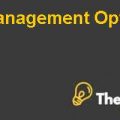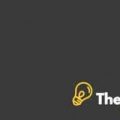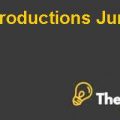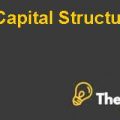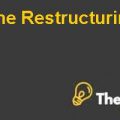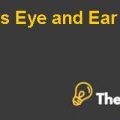
Challenges
The challenges of the company with respect to the financial leverage has emerged due to the growing position of the cash flows that is dwindling investors return. There is a big challenge, how to revise the company performance and capital structure with incorporating the future investment risk. To compete with the challenges the company has designed four financial leverage ratio for selecting the best capital structure of the company, where earnings per share and interest cost are balanced.
The executive of the company observed that the growing cash flow position have lowered the equity return for the investors in the year 2003. They wanted to secure the equity return in order to save the future position of the company. A certain assumption has been taken for calculating the financial leverage ratio and the debt amount. The following assumption is given below for evaluating the best criteria for the company.
- The 20%, debt is assumed to half of the 40% debt.
- 60%, debt is assumed to be 1.5 times of the 40% ratio.
- The tax rate is 38.5%.
- Assumed that there is no dividend paid to the shareholders.
- Assumed that the repurchase sales price is same as mentioned in the year 2004.
These are the key assumption which has to be followed to face the challenges of the revising capital structure and the financial leverage of the company. The organization should also focus on the qualitative factors of the capital structure which would be also of the same importance as was analyzing the revise calculations.
Decision Criteria
To overcome the company's problem and to face the challenges it is necessary to build three decision criteria for revising the capital structure and maintaining the financial leverage ratios. In this analysis the challenges faced by the enterprise are in depth. The reason is that, they are disrupting investors in term of returns. Moreover, the factors which are affecting are based on the markets terms. The decision criteria depend on three criteria which are given below:
- Debt should be accepted or Not
- Justification of Debt should accept or Not
- Implementation of Debt Effects
Now these decision criteria in each elaborate by identifying their attractiveness with respect to the investor’s return and stable capital structure of the company.
Debt should Accepted or Not
The past performance of the company was at its the best. The result of best performance comes with the term of cash flows which was enough to compete in the market. Moreover, the balance sheet showing the excess cash for the better performance of the company. This excess concern was the issue and where it should be utilized and the management of the company is not effectively maintaining a company’s capital structure for the tenacity of generating returns in positive terms. For this excess cash is negatively impacting on the EPS and returns and this would be the cause of divesting in the company. The signs indicate that the enterprise should incorporate debt plans for the effective capital management. This could cause for helping to gain the investors’ attention toward the company.
Furthermore, the past performance of the enterprise was showing the positive return on the equity and there were no excess cash remaining. All cash is allocated to the expansion or investment sides. Their earnings increased by 300 times or more as compare from the year 1993 to 2004. This nature shows the performance of the company. For maintaining the same position in the company, the enterprise should adopt the debt sourcing strategy. This would help in gaining the investors’ attention.
The company has excess cash of around $400 million and also having the opportunity to increase the debt to$636 million. By using this strategy company could repurchase its shares. This would help in leading position of the company as previously the company had held. Moreover, the company has four options that is to move on 20%, 40%, 60% and 80% of financial leverage ratio of debt and equity. This would also rate in the credit ranking of the company. Right now the company have the position of AAA rating because of being a debt free company. If the company moves to 20%, then the rate will become an AA, if it moves 40%, then still it would be in AA position. The company move to 60% debt then it would be B rating and further it moves to 80% than it would be the same rating as the 60% have the position. In the four options, 20%, 40%, 60% and 80% debt position that is $318 million, $636 million, $954 million and $1270 million respectively......................
This is just a sample partial case solution. Please place the order on the website to order your own originally done case solution.



